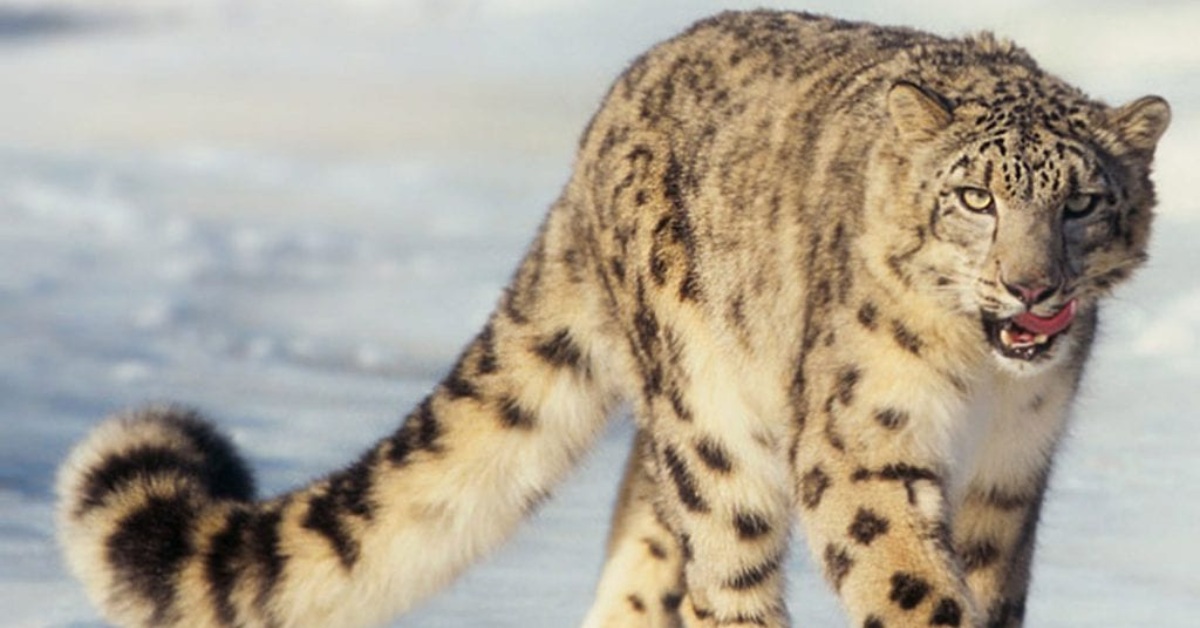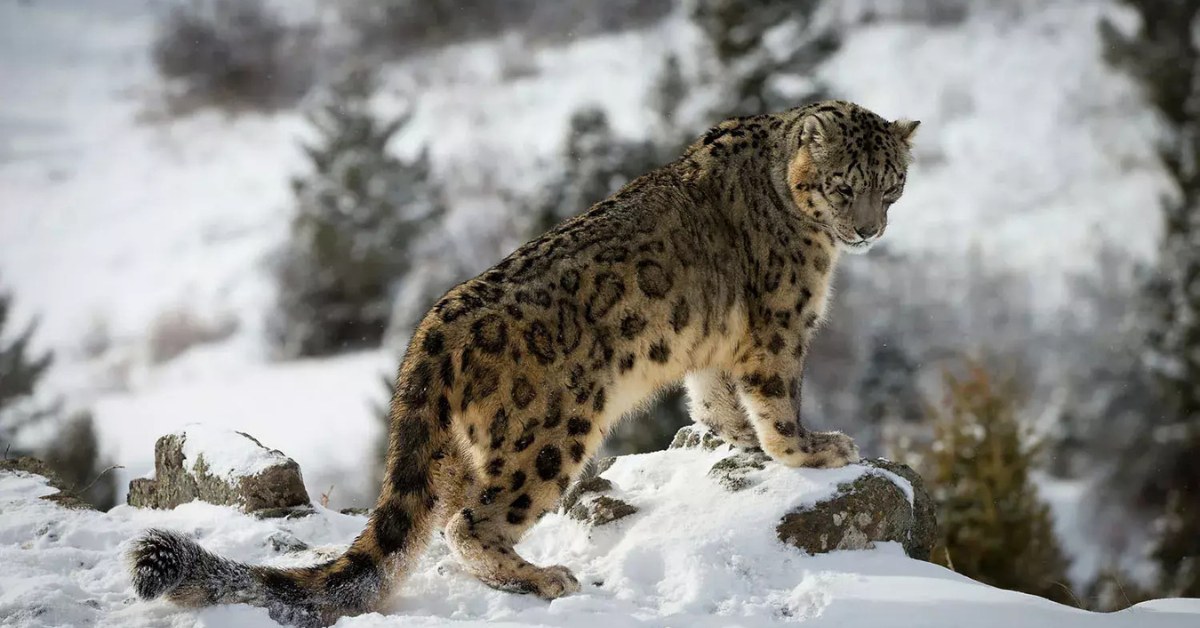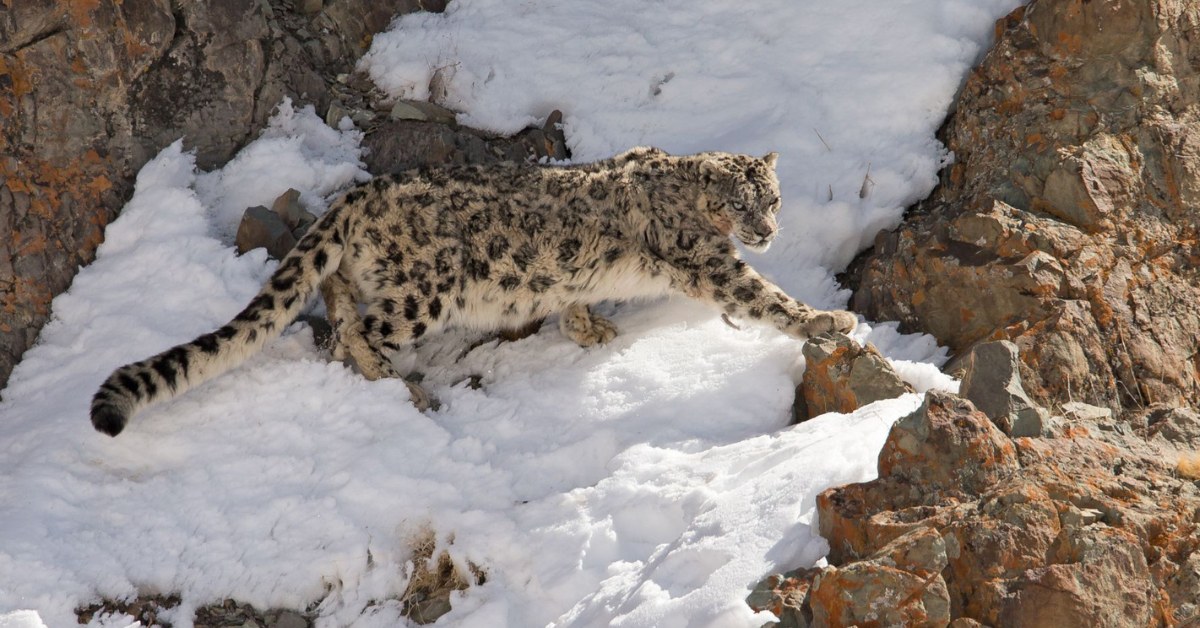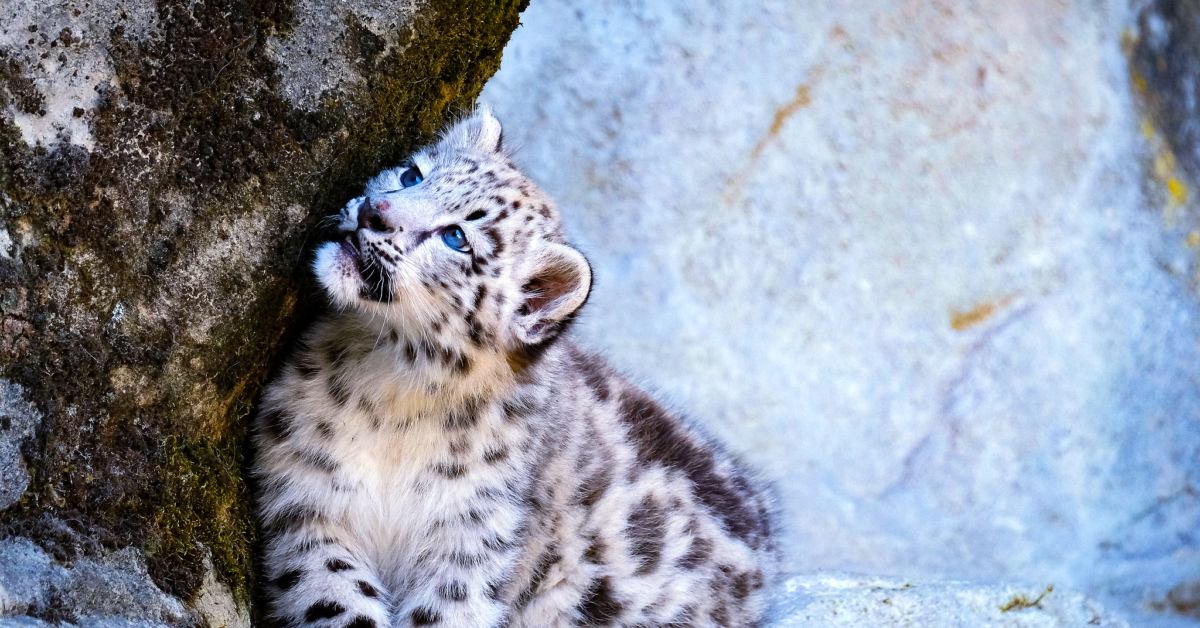68% of India’s Snow Leopards Are in Ladakh And Locals Helped Make It Happen
In the windswept landscapes of Ladakh, where the Himalayas cut across the sky and silence hangs heavy over snow-dusted valleys, a rare and mysterious predator still prowls. The snow leopard, often called the “ghost of the mountains,” is an animal most people will never see. It moves silently, hidden by its thick camouflage, and has remained largely untracked for decades. But recent years have brought about a shift, not only in how we study these elusive cats, but in how the people of Ladakh live alongside them.
Tracking the elusive predator
According to India’s most extensive snow leopard survey to date, reports Mongabay, Ladakh is home to an estimated 477 snow leopards. That is nearly 68% of the country’s entire snow leopard population, of around 718. This two-year study, covering 59,000 square kilometres of the trans-Himalayan region, marked a major milestone for snow leopard research.
Researchers walked more than 6,000 kilometres, recorded nearly 10,000 signs of snow leopard presence, and installed 956 camera traps in high, medium, and low-density zones. These traps captured over 26,000 images.
Using the artificial intelligence software called CaTRAT, trained specifically to recognise Himalayan wildlife, scientists identified individual snow leopards by the unique patterns on their foreheads, more reliable than side markings, which can be distorted by wind-ruffled fur. From 126 identified individuals, the team used spatial capture-recapture models to estimate a total population of 477 snow leopards in Ladakh.
 Ladakh is home to an estimated 477 snow leopards; Picture source: Bubo Birding
Ladakh is home to an estimated 477 snow leopards; Picture source: Bubo Birding
A vision for coexistence
But while these figures are impressive, the real success lies in what is happening on the ground.
At the centre of Ladakh’s conservation effort is the Snow Leopard Conservancy India Trust (SLC-IT), an initiative founded in 2003 by mountaineer Rinchen Wangchuk and biologist Rodney Jackson. In 2013, after Wangchuk’s passing, Dr Tsewang Namgail returned from the United States, where he had been working as a wildlife biologist, to take over as director. His mission was to continue the work of building harmony between people and predators.
One of the conservancy’s most important initiatives is a livestock insurance scheme designed to reduce human-wildlife conflict, a common issue in pastoral communities. Each household contributes Rs 400 per year to a village fund. If a snow leopard kills livestock, the family is compensated, they receive Rs 5,000 for a small animal and Rs 7,000 for a larger one.
Living alongside the ferocious predator isn’t a dream for the pastoral communities of Ladakh. But maintaining their livelihoods through schemes like this makes it possible. Namgail says the felines are fondly called ‘Ri Gyancha’, which translates to ‘ornaments of the mountains’.
Tourism that gives back
This change in attitude is partly due to the economic incentives linked to the presence of snow leopards. A major success story has been the Himalayan Homestay Programme, launched in 2001. It began with a simple idea, instead of building tourist camps that generate waste, why not have visitors stay in local homes? The conservancy surveyed villages and found strong support for the concept.
 At the centre of Ladakh’s conservation effort is the Snow Leopard Conservancy India Trust (SLC-IT), an initiative founded in 2003; Picture source: Indiaspend
At the centre of Ladakh’s conservation effort is the Snow Leopard Conservancy India Trust (SLC-IT), an initiative founded in 2003; Picture source: Indiaspend
Today, more than 200 homestays operate in 40 Ladakhi villages. “These funds are created uniquely: 10 percent of all homestays’ income goes into a ‘village conservation fund’, which is used by villagers for tree planting, garbage cleaning, and maintenance of their cultural heritage, such as mani walls, chortens, and sacred juniper stands,” explains Dr Namgail.
Choosing to stay in one of these homestays generates funds for communities that they use to protect their mountain environment. The villagers also host guests on a rotational basis. “This is done so that no single family can monopolise the tourists. Because if that were to happen, it would create disharmony in the village,” he says.
Safeguarding livestock and landscapes
The Conservancy also supports the construction of predator-proof livestock enclosures using low-cost and locally sourced materials. “Villagers provide the labour while SLC-IT provides wire mesh, doorframes, beams, and wooden poles,” says Namgail.
The snow leopard plays a key role in maintaining ecological balance. It preys on herbivores such as the Himalayan blue sheep and Asiatic ibex, keeping their populations in check and preventing overgrazing. “These herbivores feed on alpine pastures that grow on the slopes of the mountain ranges. By controlling the population of these sheep and goats, the snow leopard gives the grasses and plants a chance to regenerate,” Dr Namgail explains.
 The snow leopard plays a key role in maintaining ecological balance; Picture source: Wild Images
The snow leopard plays a key role in maintaining ecological balance; Picture source: Wild Images
That ecological balance has knock-on effects. “These days we are receiving more rain and less snow. As the rainwater flows down the slopes, the loose soil also goes with it,” he says. The soil is loosened by the grazing activity of goats. The presence of the snow leopard can help reduce such erosion, offering some protection against the increasing risk of floods.
Threats on the horizon
Still, there are growing threats. Ladakh is home to a natural community of carnivores, including wolves, lynx, brown bears, foxes, and now feral dogs. But unlike the others, feral dogs are a man-made crisis. They pose a serious threat to both snow leopards and wolves, and the situation will only worsen if left unchecked.
Infrastructure development also risks fragmenting important corridors that connect Ladakh’s snow leopards to populations across Tibet, Nepal, Pakistan, and the Karakoram. Its distinct ecological and cultural identity calls for context-specific development. One-size-fits-all models from elsewhere are unlikely to work here.
A model for the Himalayas
Encouragingly, the survey aligns with international frameworks like PAWS (Population Assessment of the World’s Snow Leopards), offering a model that can be replicated across the Himalayas. It is not just about tracking snow leopards, the same data and methods can be used to monitor other rare carnivores too.
 Namgail says the felines are fondly called ‘Ri Gyancha’, which translates to ‘ornaments of the mountains’; Picture source: SetMyTrip
Namgail says the felines are fondly called ‘Ri Gyancha’, which translates to ‘ornaments of the mountains’; Picture source: SetMyTrip
As darkness falls over the high mountains and the last rays of sunlight catch the snow-covered peaks, the snow leopard begins its silent patrol, no longer just a shadow in the mist, but a symbol of how people and wildlife can, with care and commitment, learn to live side by side.
Source:
News